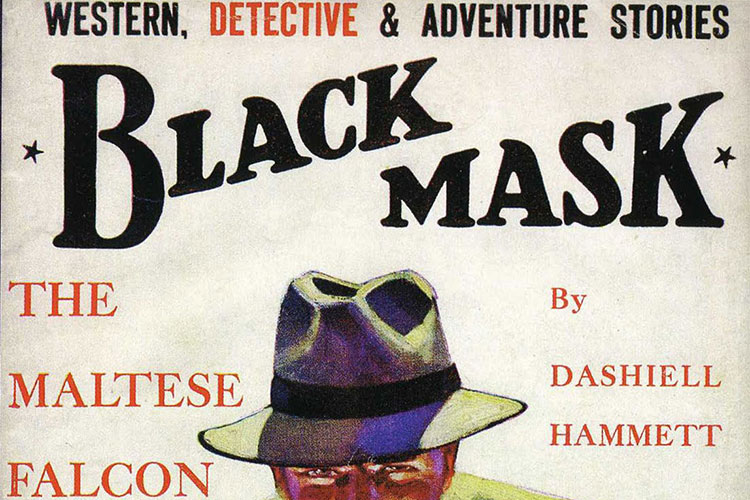Visualize this: Project shows U.S. magazine evolution
A grant from the National Endowment for the Humanities will help uncover a wealth of information about historically significant American magazines.

August 14, 2017
A new project will tap funding from the National Endowment for the Humanities to collect a century’s worth of hard-to-access circulation data to document the histories of major American magazines such as the New Yorker, Saturday Evening Post, Life and Black Mask, then present it with compelling, open-source digital tools.
The Circulating American Magazines Project is the brainchild of Edward Timke, a media studies lecturer at UC Berkeley who has a keen interest in media history and the role of advertising, and Brooks Hefner, an associate professor of English at James Madison University in Harrisonburg, Va., who has a penchant for hard-boiled crime and detective fiction, dime novels and westerns.

The photo above shows a news stand chock full of magazines in Omaha, Nebraska, in 1938. (Photo courtesy of the Library of Congress)
First, Timke said, they want to make circulation figures for 1868-1972 that have been “virtually invisible” available for research, teaching and learning. The data currently is available only by personal visit to the Library of Congress archive in Washington, D.C. Timke and Hefner say their website should be available to the public by summer 2018.
Reasons behind popular reading
“By digitizing the data and making it openly available, researchers can explore questions from easily available, officially sanctioned data that have not been studied before – such as why a magazine may have died or why it may have become so popular in one particular place,” said Timke.

UC Berkeley media studies lecturer Ed Timke hopes the Circulating American Magazines Project reveals some long-hidden truths about the ebbs and flows in U.S. magazine popularity. (UC Berkeley photo by Brittany Hosea-Small)
He and Hefner are including magazines based on their stand-out roles, such as serializing popular novels or communicating in new ways about popular culture, fashion or news.
“We’re consulting with an advisory board of periodical scholars to make sure our list is expansive and inclusive to cover various genres and audiences (i.e. price points for magazines, magazines for and by women, magazines for and by people of color, etc.),” Timke said.
By collecting and correlating circulation data overall and by state with other information, the researchers plan to provide information important to understanding American magazine history. For example, the data could help determine if spikes in circulation were caused by changing prices or adjustments, an eye-catching cover, a shift in editorial leadership or other factors.
‘Stuff that dreams are made of’
Hefner has noted that circulation for Black Mask, a legendary pulp magazine, peaked in the winter of 1929-30 when it serialized Dashiell Hammett’s detective novel, The Maltese Falcon, and then dropped precipitously during the Great Depression.

Brooks Hefner of James Madison University in Harrisonburg, Virginia, brings a penchant for hard-boiled crime and detective fiction, dime novels and westerns to the project.
Another circulation swing for the magazine coincided with a 1934 cut in its cover price, while sales otherwise following traditional seasonal dynamics for the magazine market – climbing in the winter and falling in the summer.
Hefner and Timke think the new project could shed even more light on these and other questions.
Obtaining reliable data
Although some circulation data was collected for major magazines in the United States in the period Timke and Hefner are examining, they say many numbers are piecemeal, self-reported or come from unreliable sources such as memoirs and letters.
In 1914, American magazine advertisers joined the newly established Audit Bureau of Circulations (ABC) in hopes of using higher circulation numbers to boast advertising rates. Although the ABC — which has since been rebranded as the Alliance for Audited Media — recorded the circulation of major U.S. magazines every six months, data has remained hard to access or find. Some records have been poorly catalogued, while some exist only in summary reports or in original copies available only at the Library of Congress reading rooms in Washington, D.C.
The research team will collect the ABC data and offer it for easy download and visualization. They also will supplement the audit reports with information from the advertising agencies of Philadelphia-based N.W. Ayer & Son, and George C. Rowell & Co. in New York, as well as Street & Smith, a large publication company that recorded some circulation figures for its printed books and affordably priced magazines.
“We want to add visualization tools on our site so users can explore and find relationships based on circulation figures,” said Timke. “Making things visually appealing makes data more exciting and attractive than a list of numbers.”
Timke and Hefner decided to team up after learning of each other’s shared interests during an NEH summer institute in 2015 that looked at the history and influence of New York on American periodical history. Timke was studying audit bureaus in the U.S. and Europe after World War II and into the 1970s, and Hefner was interested in magazine publishers’ circulation data.
Interactive graphics
The NEH recently announced that it is supporting their work with a digital humanities advancement grant of $50,000.
Timke and Hefner want to excite students about magazine and media history as well as the power of data and data visualization. Students with UC Berkeley’s Undergraduate Research Apprenticeship Program will work with Timke this fall, working on an online interface similar to the interactive graphics found on the New York Times website.
“Our project provides data that can be used not just in history, literature and media studies,” said Timke, “but it can be taken up in statistics and possibly even business. It’s a blend of the humanities and quantitative social sciences.”